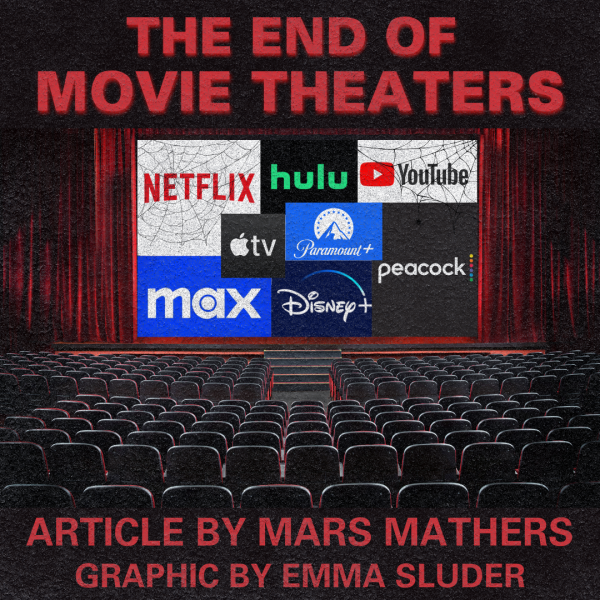
When did you last go to the movie theater? Was it last week? Last month? Last year? According to a recent survey, most people now visit the movie theater only three to five times a year. Would it surprise you to learn that in the 1930s, around 60% of Americans went to the movie theater on a weekly basis? So what caused this drastic drop in movie theater attendance, and can theaters ever regain their former glory?
Streaming Services
The largest threat posed to movie theaters today is the existence of streaming services. Between Netflix, Hulu, HBO, etc., most of America has a subscription to at least one of these platforms. Streaming services offer their customers the ability to watch any movie, any time, anywhere. Customers are given access to thousands of movies that can be viewed with a few clicks on a remote. If you want to watch a movie at a theater, you need to buy the ticket, leave the comfort of your bed or couch, drive to the theater, sit in a dark room for hours, and then drive yourself back home. The convenience of streaming services appeals to peoples’ desire for ease and comfort.
Cost
Another factor that deters people from going to movie theaters is cost. With the price of the ticket, coupled with the potential cost of snacks and drinks, going to the movies is not a cheap endeavor. The average price of a movie ticket is around $15, which won’t break the bank, but the price of one ticket is the same amount that you would pay for a whole month’s subscription to most streaming services. Additionally, snacks at movie theaters are sold at an incredible markup, costing over 200% more than what you would pay at your local grocery store. For example, at Food Lion, gummy worms are sold for $1.99, but at AMC Theaters, the exact same product costs $5.49. As a result, most people stay in, watch a movie on their TV, buy their own snacks, and save money.
TV Shows
Lastly, it’s not just movie theaters that have fallen from popularity, it’s movies too. As consumers’ attention spans continue to shorten due to the prevalence of short-form social media content, movies have been replaced by TV shows. Many TV shows like Grey’s Anatomy or Black Mirror feature shorter storylines and 20-40 minute episodes crafted to tell an entire story that can be watched in one brief sitting. TV also provides something that movies don’t: long-term entertainment. TV shows can keep you supplied with content for weeks or months, with many shows spanning upwards of 50 hours of watchtime, whereas movies can only be watched once over a short period of time. However, it is important to note that many people still enjoy watching movies and actually prefer them over TV shows. Since movies are longer and often more focused, they allow for a deeper dive into a single story or theme without the interruptions or pacing required by episodic formats. They offer a beginning, middle, and end within a few hours, providing a sense of closure and satisfaction. Despite these positive aspects of movies, many people still shy away from them and favor TV shows due to their low-commitment nature. While movies can be paused and resumed on streaming platforms, TV shows tend to be more convenient for viewers with busy schedules, as it is easier to pick up wherever you left off due to the shorter, episodic format that provides natural stopping points throughout.
The Future of Movie Theaters
So, can movie theaters come back? The odds are clearly stacked against the survival of theaters, but it’s possible for them to regain at least a fraction of their former popularity. In a post-pandemic world, an increasing amount of people want to get out of the house, go places, and do things, and movie theaters can be a great venue for that. There is a ton of variety in movie theaters, so find one that fits your vibe. Maybe it’s a drive-in or a 4D screening, or perhaps it has massage chairs. Thus, if you’re looking for a new activity, hit up your local movie theater and see what’s playing!











